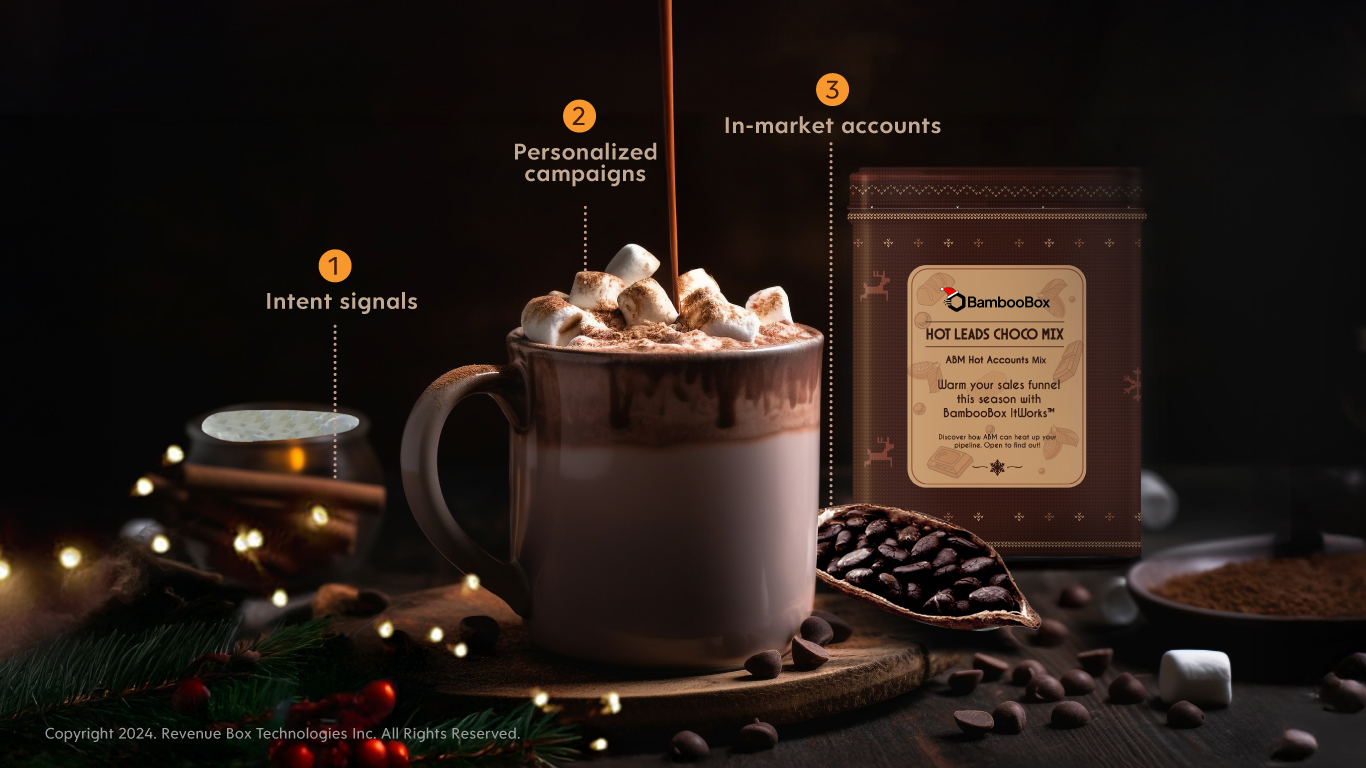What if you knew which companies your prospect has been talking to? Or their pain points and what stage of the buyer’s journey your prospect is at without contacting them?
It would be amazing, right? After all, that’s what all B2B marketers want in order to make their marketing strategies successful. To your surprise, that’s all possible with B2B intent data.
Using b2b buyer intent, you can stay ahead of your competitors and approach your prospects with better context.
This blog discusses everything from what B2B buyer intent is, its types, and how you can use it to enhance B2B marketing strategies.
What is B2B Intent Data
B2B intent data is a collection of behavioral signs of a prospect (or a business). This data helps you understand if and when the prospect is facing the problem you’re solving for. Or that they’re in need of a solution similar to the one you provide.
So, B2B intent data helps you determine where a prospect is in the buyer’s journey. This allows marketers to launch targeted campaigns leading to better conversions.
What are the types of intent data
First-party Intent Data
First-party intent data is what you collect from your own website or platforms, such as:
- Social Media Campaigns
- Landing Pages
- Demand Generation Companies
- Surveys
- CRM
- Questionnaires
Now, first-party intent data is pretty useful. By observing different signals, such as when and how they interact with your website or content pieces and what pages they’re spending the most time on, you can easily determine the buyer stage they’re in and their interest.
While first-party data is useful, it’s only a part of the puzzle. It tells you about the intent of prospects visiting your website or platforms only.
But what if your ideal customers are not on your website? What if they’re checking our other options (your competitors)? Well, that’s when 3rd Party Intent Data comes into the picture.
Third-Party Intent Data
Unlike first-party, third-party intent data is what a business collects from sources other than its own website. These sources can include other third-party websites, data sets sold by different vendors, etc.
Third-party intent data offers you a hawk’s eye view of your prospects’ activities across the web, not just your own website (which is limited).
Also, using third-party intent data, you can find which prospects are looking for solutions like yours. This gives you an opportunity to jump right in and be the first to contact your prospect, thus increasing the chances of a sale.
How can marketers use B2B Intent Data
1. Identify opportunities early
The proverb early bird catches the worm fits quite well in the B2B domain. After all, the early your salespeople contact the prospect, the higher your chances of converting a lead into a paying customer.
In fact, according to HubSpot, in about 70% of the cases, companies prefer giving business to salespeople who contact them first. And that’s exactly what buyer intent helps you achieve.
With intent data, you can get to your prospective clients early in the buying phases, even before they’ve contacted your competitor. And this increases the likeliness of converting your leads.
2. Lead scoring
Sometimes, B2B marketers are able to generate numerous leads, but they don’t have time to reach out to all of them. And because of this, the leads who’re actually valuable or are intended to buy aren’t contacted, which leads to poor conversion.
That’s when lead scoring comes into the picture.
You can use B2B intent data for lead scoring and rank the prospects based on their intent. And then, you can interact with the ones who have the best intention to buy. This way, you can direct your sales team’s efforts toward high-value prospects ensuring better conversions, while being efficient.
3. Better cold calling prospect
When it comes to outbound, sales individuals don’t have the right idea about the client’s intent. Basically, sales reps have limited information, which kind of puts off the client, leading to a poor conversion rate. However, with B2B intent data, you can deal with this.
With intent data, you can find what companies your prospect has already spoken to. This allows you to pitch your product accordingly, i.e., in a way, it sounds better than others. Also, your sales reps don’t have to ask about the prospect’s pain points as they already know them.
4. Reduce churn rate and improve upsell
With intent data, you can know if our existing customers are talking to your competitors. And if they are, you can offer them more benefits or features to retain them. This not only helps reduce the churn rate but also increases the opportunity to upsell.
How to start using intent
B2B intent data is powerful. You can enhance the effectiveness of your B2B marketing strategy by using insights from third-party intent data.
Understanding intent and its applications could be tricky. Especially when you have to how to set up your intent generation process. And extract insights from the data. You might want to reach out to a solution provider who can streamline it for you.



